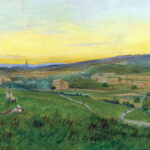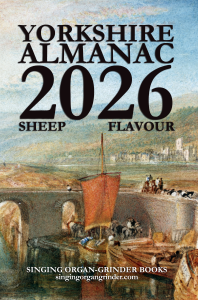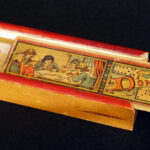22 August 1896: A Leeds GP suggests that mysterious cases of diphtheria in Meanwood may be caused by its market gardens
Gordon Sharp. 1896. The Soil in Relation to Diphtheria and Its Organism. British Medical Journal, Vol. 2 for 1896 (July-December). Ed. Ernest Hart. London: British Medical Association. Get it:
.Unedited excerpt
If an excerpt is used in the book, it will be shorter, edited and, where applicable, translated.
[Much omitted]
THE SOIL IN THE NEIGHBOURHOOD OF MARKET GARDENS., ETC. In the Meanwood suburban district of Leeds “we have had cases of diphtheria which have been difficult to account for.” In the same district enteric fever and scarlatina are likewise known in epidemic form, but definite information cannot be obtained because the Notification Act has only been in force since May, 1894. In the same district, the disease called roup in hens is often epidemic, and in certain epidemics clears out whole coops of birds. The houses of the district are in many instances old, and built of a soft conglomerate. Meanwood was once a detached village but is now within the city of Leeds. Before describing the soil I must first mention the other features of importance. The district is largely wooded. The people are chiefly of the well-to-do working class. A large tannery lies in the valley, through which valley there runs a beck receiving the refuse from the tannery. Numerous market gardens are dotted over the village. Recently I had an opportunity of examining a piece of waste ground that was being reclaimed by one of the market gardeners. The surface soil in parts was clayey; in other parts it was sandy; and in places it consisted of sand and blackish loam. One foot below, or in parts less than this, hard sandstone rock was reached; in other parts the subsoil was peaty, and in others some feet below the surface a wet bog was reached. These varieties of subsoil have a varying effect, naturally, on the growth and rearing of market produce. The gardener told me he had no need to water his plants, as he had to do in gardens in other districts, for if the surface was dry at mid-day in summer, a few inches down it was quite moist, and the driest summer’s heat almost failed to dispel this layer of moisture. Here then, we may have a condition of things favourable to the life and growth of the microbe of diphtheria. We have a soil which from the nature of the subsoil must often be moist, in which the organism can at least lie dormant, and under certain circumstances they could be readily thrown on the surface and scattered by the wind or other agency. Roup in hens has already been mentioned as occurring in this neighbourhood, allowing for the present that the organism of roup is different from the organism of human diphtheria, this soil must also be favourable to the growth of the microbe of the former malady.
[Much omitted]
Comment
Comment
Something to say? Get in touch
Similar
 30 May 1835: Alfred Austin, future poet laureate, “Banjo-Byron that twangs the strum-strum,” is born into rural splendour at Ashwood, 48 Headingley Lane, Leeds
30 May 1835: Alfred Austin, future poet laureate, “Banjo-Byron that twangs the strum-strum,” is born into rural splendour at Ashwood, 48 Headingley Lane, Leeds Reproduction through the blind benevolence of Leeds Other Paper (RIP).1 April 1979: Amid motorway mania in Leeds, West Yorkshire Council is today to reveal plans to link Chapeltown and Woodhouse by a ¼-mile suspension bridge across Meanwood Beck
Reproduction through the blind benevolence of Leeds Other Paper (RIP).1 April 1979: Amid motorway mania in Leeds, West Yorkshire Council is today to reveal plans to link Chapeltown and Woodhouse by a ¼-mile suspension bridge across Meanwood Beck
Comment
Comment
Something to say? Get in touch
Search
Donate
Music & books
Place-People-Play: Childcare (and the Kazookestra) on the Headingley/Weetwood borders next to Meanwood Park.
Music from and about Yorkshire by Leeds's Singing Organ-Grinder.



 Bluesky
Bluesky Extwitter
Extwitter